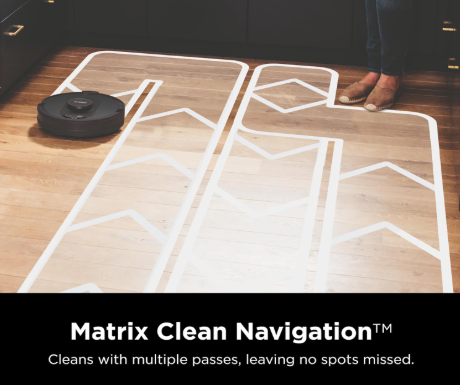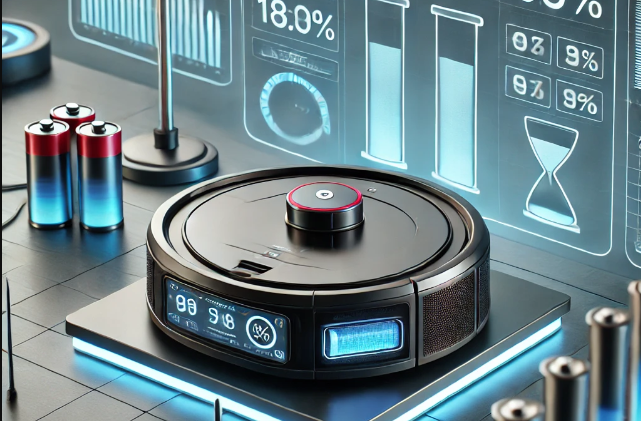How We Test Robot Vacuums
Welcome to Shark Cordless Vacuum‘s ultimate guide to the best robot vacuums of 2024! Our recommendations are based on thorough, independent evaluations, free from sponsorship, with a focus on cleaning performance and innovative features like obstacle avoidance, AI integration, advanced docking stations, and mopping capabilities.
At Shark Cordless Vacuum, we’re committed to offering the most comprehensive and insightful vacuum cleaner reviews. Our detailed testing methods are designed to evaluate key performance areas such as debris pickup, navigation, obstacle avoidance, and battery efficiency. While we don’t claim our tests are as rigorous as laboratory standards, we strive to provide honest and fair assessments, highlighting the differences between products from a consumer’s perspective.
With years of experience conducting consistent tests on hundreds of products, we can quickly identify whether a vacuum stands out as significantly better or worse than average. Our testing methods are carefully crafted to simulate real-life scenarios that vacuums typically face, ensuring our reviews are thorough and valuable for consumers. Here’s a closer look at how we test robot vacuums:

Shark AI Ultra Voice Control Robot Vacuum
Shark AI Ultra Robot Vacuum with Matrix Clean Navigation, Voice Control, Home Mapping, 60-Day Self-Empty Base, ideal for homes with pets, carpets, and hard floors (Silver/Black).

POWERFUL SUCTION: Experience strong Shark suction that effectively removes dirt and debris from all floor types, handling even the toughest messes with ease. Control it effortlessly using the SharkClean App or voice commands.
COMPLETE COVERAGE: The Matrix Clean technology ensures thorough cleaning by following a precise grid pattern, making multiple passes to tackle dirt and debris for a deep, whole-home clean.
Shark AV2501AE AI Robot Vacuum
Shark AI Robot Vacuum AV2501AE with XL HEPA Self-Empty Base, 60-Day Bagless Capacity, LIDAR Navigation, Wi-Fi Connectivity, Alexa Compatibility, and powerful cleaning for pet hair, carpets, and hard floors in sleek black.

LONG-LASTING RUNTIME: Enjoy up to 120 minutes of uninterrupted cleaning. With the Recharge and Resume feature, the robot automatically returns to its dock to recharge and continues cleaning from where it left off.
IDEAL FOR PET-FRIENDLY HOMES: Featuring strong suction power, a self-cleaning brushroll, and a HEPA filtration system, this Shark robot vacuum effortlessly captures pet hair, dust, dander, and allergens.
Shark AV2501S AI Ultra Robot Vacuum
Shark AV2501S AI Ultra Robot Vacuum – Featuring advanced Matrix Clean technology, precise home mapping, a 30-day capacity bagless self-emptying HEPA base, and Wi-Fi connectivity. Ideal for pet hair removal. Color: Dark Grey.

PRECISION HOME MAPPING: Equipped with 360° LiDAR vision, this robot quickly and accurately maps your home, enabling systematic cleaning while detecting and avoiding obstacles. It adapts seamlessly to daily changes, operating efficiently both day and night.
HANDS-FREE CONTROL: Easily manage cleaning tasks by setting schedules, starting on-demand sessions, or activating the vacuum using voice commands via Amazon Alexa or Google Assistant.
Suction Test
In our suction test, we use a digital gauge to measure the real-world suction performance of each robot vacuum. The test is conducted at maximum power, and the highest pressure (measured in Kpa) is recorded.
Airflow Test
We use a digital anemometer to measure the airflow of robot vacuums, which calculates the volume of air passing through the vacuum in cubic feet per minute (CFM). Airflow reflects the vacuum’s ability to transport dust and debris from the surface to the dust collection system. Higher airflow means more particles and larger debris are being picked up. While we assess airflow across all power settings, our ratings are based on the maximum power level.

Navigation Test
Our robot vacuum navigation tests are performed in a controlled, home-like environment using a standardized floor plan for each model. We conduct multiple runs at different power settings to objectively evaluate and compare performance across various metrics. These include efficiency, measured by how long it takes the vacuum to cover the area, as well as overall coverage, noting any missed spots or instances where the vacuum got stuck on obstacles.

Battery Test
During the navigation test, we also track the robot vacuum’s battery efficiency by recording the percentage of battery lost for each square meter cleaned at three different power settings. This helps us assess the vacuum’s endurance and practical performance in real-world conditions.
Advanced Technology Assessment
For advanced robot vacuums, we evaluate their obstacle avoidance abilities and assess the effectiveness of their enhanced navigation technologies:
- Mapping Efficiency: Evaluating how swiftly and accurately the robot vacuum maps its surroundings.
- Obstacle Avoidance: Assessing the vacuum’s ability to detect and avoid objects of varying sizes and heights.
- App and Smart Features: Assessing the functionality of smart features, including scheduling, zone cleaning, carpet avoidance, 3D mapping, individual room settings, cleaning sequence preferences, room selection, multi-floor mapping, no-go zones, adjustable auto-empty frequency, do-not-disturb mode, live video monitoring, robot location tracking, virtual assistant integration, dirt detection, and carpet recognition, among others.

Brushes Analysis
When evaluating the brushes of robot vacuums, we found that both the type and quantity of brushes play a key role in improving performance and making maintenance easier. We give additional credit for:
- The presence of side brushes, which enhance the vacuum’s cleaning coverage.
- Dual brush rolls and adjustable floating brushes that adapt to different floor surfaces.
- The addition of an anti-tangle roller to prevent hair and debris from getting caught.
Anti-Hair Wrap Test
Along with an anti-tangle roller, a robot vacuum may feature built-in anti-tangle technology. We evaluate either or both of these features to determine how effectively the vacuum handles hair without it becoming tangled in the brush roll. This is tested by placing 1 gram of 7-inch hair in a 4×4 test area and allowing the robot vacuum to complete a full cleaning cycle.

Carpet Deep Clean Test
For this test, we embed 100/150 grams of sand into medium-pile carpet to mimic deeply embedded dirt. The robot vacuum is then given a fixed amount of time to clean the area at its maximum power setting. Afterward, we weigh the contents of the dustbin to measure the amount of sand collected. This test is repeated at least three times to ensure accuracy.

Crevice Pickup Test
This test measures the vacuum’s ability to clean debris from floor crevices, such as seams and transitions. We use a testing surface with ¼ inch and 1/8 inch deep crevices, running the robot vacuum over the area at its highest power setting for a set duration. A perfect score is given to vacuums that successfully remove all debris from both crevices.

Mop Functionality Tests
For robot vacuums with mopping features, we assess their effectiveness on both wet and dried stains, using substances like coffee and grape juice. We use black lights to detect any remaining traces of stains and visually inspect the cleaning performance. Extra points are awarded for mopping systems that utilize spinning, pressurized, or vibrating mop pads for enhanced cleaning. Vacuums that lift their mop pads when detecting carpet also receive additional points.

Dock Evaluations
We assess the functionality and features of a robot vacuum’s docking station, giving points for advanced features that have been proven effective and useful. These may include:
- Washing of mop pads
- Drying of mop pads
- Refilling the robot vacuum’s built-in water tank
- Separate clean and dirty water tanks in the docking station
- Automatic dry debris disposal
- Removable drip tray for water collection
- Self-cleaning functionality

Vacuum Cleaner Comparison Overview
After conducting thorough evaluations of each vacuum cleaner, we document and track the results. This systematic process allows us to compare the performance of each vacuum within its respective category. By analyzing factors such as price range, flooring type, and unique features, we are able to provide recommendations tailored to specific needs. This structured approach ensures that our performance testing and recommendations remain fair, unbiased, and based on objective data.
